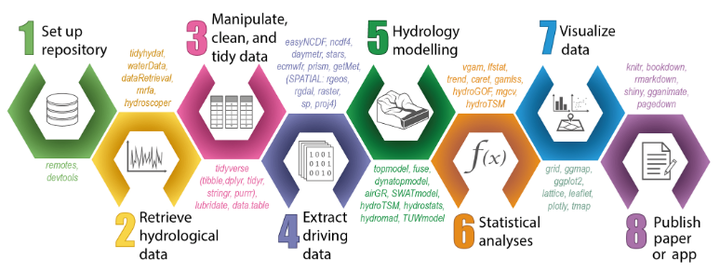
Using R in hydrology
Review of recent developments and future directions
Abstract
The open-source programming language R has gained a central place in the hydrological sciences over the last decade, driven by the availability of diverse hydro-meteorological data archives and the development of open-source computational tools. The growth of R’s usage in hydrology is reflected in the number of newly published hydrological packages, the strengthening of online user communities, and the popularity of training courses and events. In this paper, we explore the benefits and advantages of R’s usage in hydrology, such as the democratization of data science and numerical literacy, the enhancement of reproducible research and open science, the access to statistical tools, the ease of connecting R to and from other languages, and the support provided by a growing community. This paper provides an overview of a typical hydrological workflow based on reproducible principles and packages for retrieval of hydro-meteorological data, spatial analysis, hydro-logical modelling, statistics, and the design of static and dynamic visualizations and documents. We discuss some of the challenges that arise when using R in hydrology and useful tools to overcome them, including the use of hydrological libraries, documentation, and vignettes (long-form guides that illustrate how to use packages); the role of integrated development environments (IDEs); and the challenges of big data and parallel computing in hydrology. Lastly, this paper provides a roadmap for R’s future within hydrology, with R packages as a driver of progress in the hydrological sciences, application programming interfaces (APIs) providing new avenues for data acquisition and provision, enhanced teaching of hydrology in R, and the continued growth of the community via short courses and events.